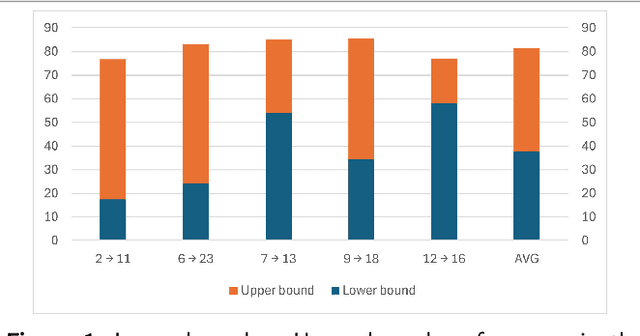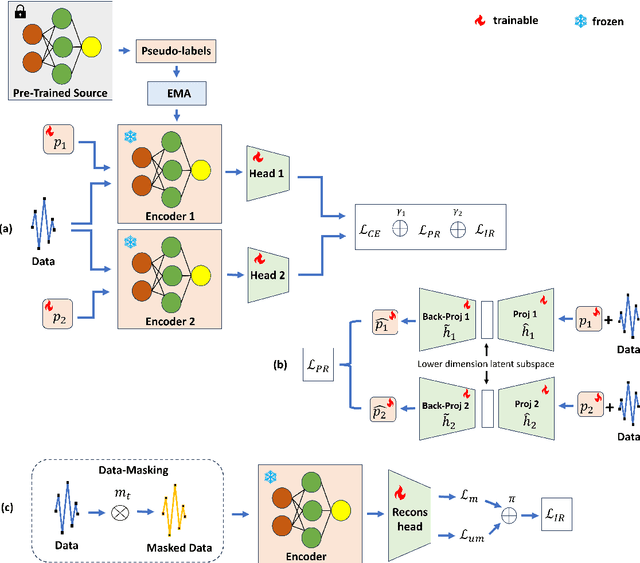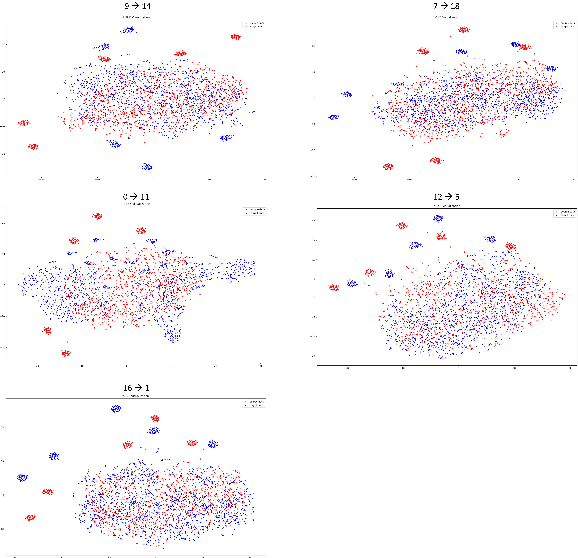Topic Modeling
Topic modeling is a type of statistical modeling for discovering the abstract topics that occur in a collection of documents.
Papers and Code
From Outliers to Topics in Language Models: Anticipating Trends in News Corpora
Sep 26, 2025This paper examines how outliers, often dismissed as noise in topic modeling, can act as weak signals of emerging topics in dynamic news corpora. Using vector embeddings from state-of-the-art language models and a cumulative clustering approach, we track their evolution over time in French and English news datasets focused on corporate social responsibility and climate change. The results reveal a consistent pattern: outliers tend to evolve into coherent topics over time across both models and languages.
Evaluation of Clinical Trials Reporting Quality using Large Language Models
Oct 05, 2025Reporting quality is an important topic in clinical trial research articles, as it can impact clinical decisions. In this article, we test the ability of large language models to assess the reporting quality of this type of article using the Consolidated Standards of Reporting Trials (CONSORT). We create CONSORT-QA, an evaluation corpus from two studies on abstract reporting quality with CONSORT-abstract standards. We then evaluate the ability of different large generative language models (from the general domain or adapted to the biomedical domain) to correctly assess CONSORT criteria with different known prompting methods, including Chain-of-thought. Our best combination of model and prompting method achieves 85% accuracy. Using Chain-of-thought adds valuable information on the model's reasoning for completing the task.
Standard-to-Dialect Transfer Trends Differ across Text and Speech: A Case Study on Intent and Topic Classification in German Dialects
Oct 09, 2025



Research on cross-dialectal transfer from a standard to a non-standard dialect variety has typically focused on text data. However, dialects are primarily spoken, and non-standard spellings are known to cause issues in text processing. We compare standard-to-dialect transfer in three settings: text models, speech models, and cascaded systems where speech first gets automatically transcribed and then further processed by a text model. In our experiments, we focus on German and multiple German dialects in the context of written and spoken intent and topic classification. To that end, we release the first dialectal audio intent classification dataset. We find that the speech-only setup provides the best results on the dialect data while the text-only setup works best on the standard data. While the cascaded systems lag behind the text-only models for German, they perform relatively well on the dialectal data if the transcription system generates normalized, standard-like output.
Topic-Specific Classifiers are Better Relevance Judges than Prompted LLMs
Oct 06, 2025The unjudged document problem, where pooled test collections have incomplete relevance judgments for evaluating new retrieval systems, is a key obstacle to the reusability of test collections in information retrieval. While the de facto standard to deal with the problem is to treat unjudged documents as non-relevant, many alternatives have been proposed, including the use of large language models (LLMs) as a relevance judge (LLM-as-a-judge). However, this has been criticized as circular, since the same LLM can be used as a judge and as a ranker at the same time. We propose to train topic-specific relevance classifiers instead: By finetuning monoT5 with independent LoRA weight adaptation on the judgments of a single assessor for a single topic's pool, we align it to that assessor's notion of relevance for the topic. The system rankings obtained through our classifier's relevance judgments achieve a Spearmans' $\rho$ correlation of $>0.95$ with ground truth system rankings. As little as 128 initial human judgments per topic suffice to improve the comparability of models, compared to treating unjudged documents as non-relevant, while achieving more reliability than existing LLM-as-a-judge approaches. Topic-specific relevance classifiers thus are a lightweight and straightforward way to tackle the unjudged document problem, while maintaining human judgments as the gold standard for retrieval evaluation. Code, models, and data are made openly available.
Do LLMs Really Need 10+ Thoughts for "Find the Time 1000 Days Later"? Towards Structural Understanding of LLM Overthinking
Oct 09, 2025Models employing long chain-of-thought (CoT) reasoning have shown superior performance on complex reasoning tasks. Yet, this capability introduces a critical and often overlooked inefficiency -- overthinking -- models often engage in unnecessarily extensive reasoning even for simple queries, incurring significant computations without accuracy improvements. While prior work has explored solutions to mitigate overthinking, a fundamental gap remains in our understanding of its underlying causes. Most existing analyses are limited to superficial, profiling-based observations, failing to delve into LLMs' inner workings. This study introduces a systematic, fine-grained analyzer of LLMs' thought process to bridge the gap, TRACE. We first benchmark the overthinking issue, confirming that long-thinking models are five to twenty times slower on simple tasks with no substantial gains. We then use TRACE to first decompose the thought process into minimally complete sub-thoughts. Next, by inferring discourse relationships among sub-thoughts, we construct granular thought progression graphs and subsequently identify common thinking patterns for topically similar queries. Our analysis reveals two major patterns for open-weight thinking models -- Explorer and Late Landing. This finding provides evidence that over-verification and over-exploration are the primary drivers of overthinking in LLMs. Grounded in thought structures, we propose a utility-based definition of overthinking, which moves beyond length-based metrics. This revised definition offers a more insightful understanding of LLMs' thought progression, as well as practical guidelines for principled overthinking management.
O-Forge: An LLM + Computer Algebra Framework for Asymptotic Analysis
Oct 14, 2025Large language models have recently demonstrated advanced capabilities in solving IMO and Putnam problems; yet their role in research mathematics has remained fairly limited. The key difficulty is verification: suggested proofs may look plausible, but cannot be trusted without rigorous checking. We present a framework, called LLM+CAS, and an associated tool, O-Forge, that couples frontier LLMs with a computer algebra systems (CAS) in an In-Context Symbolic Feedback loop to produce proofs that are both creative and symbolically verified. Our focus is on asymptotic inequalities, a topic that often involves difficult proofs and appropriate decomposition of the domain into the "right" subdomains. Many mathematicians, including Terry Tao, have suggested that using AI tools to find the right decompositions can be very useful for research-level asymptotic analysis. In this paper, we show that our framework LLM+CAS turns out to be remarkably effective at proposing such decompositions via a combination of a frontier LLM and a CAS. More precisely, we use an LLM to suggest domain decomposition, and a CAS (such as Mathematica) that provides a verification of each piece axiomatically. Using this loop, we answer a question posed by Terence Tao: whether LLMs coupled with a verifier can be used to help prove intricate asymptotic inequalities. More broadly, we show how AI can move beyond contest math towards research-level tools for professional mathematicians.
Black-Box Time-Series Domain Adaptation via Cross-Prompt Foundation Models
Oct 01, 2025



The black-box domain adaptation (BBDA) topic is developed to address the privacy and security issues where only an application programming interface (API) of the source model is available for domain adaptations. Although the BBDA topic has attracted growing research attentions, existing works mostly target the vision applications and are not directly applicable to the time-series applications possessing unique spatio-temporal characteristics. In addition, none of existing approaches have explored the strength of foundation model for black box time-series domain adaptation (BBTSDA). This paper proposes a concept of Cross-Prompt Foundation Model (CPFM) for the BBTSDA problems. CPFM is constructed under a dual branch network structure where each branch is equipped with a unique prompt to capture different characteristics of data distributions. In the domain adaptation phase, the reconstruction learning phase in the prompt and input levels is developed. All of which are built upon a time-series foundation model to overcome the spatio-temporal dynamic. Our rigorous experiments substantiate the advantage of CPFM achieving improved results with noticeable margins from its competitors in three time-series datasets of different application domains.
Taking a SEAT: Predicting Value Interpretations from Sentiment, Emotion, Argument, and Topic Annotations
Oct 02, 2025Our interpretation of value concepts is shaped by our sociocultural background and lived experiences, and is thus subjective. Recognizing individual value interpretations is important for developing AI systems that can align with diverse human perspectives and avoid bias toward majority viewpoints. To this end, we investigate whether a language model can predict individual value interpretations by leveraging multi-dimensional subjective annotations as a proxy for their interpretive lens. That is, we evaluate whether providing examples of how an individual annotates Sentiment, Emotion, Argument, and Topics (SEAT dimensions) helps a language model in predicting their value interpretations. Our experiment across different zero- and few-shot settings demonstrates that providing all SEAT dimensions simultaneously yields superior performance compared to individual dimensions and a baseline where no information about the individual is provided. Furthermore, individual variations across annotators highlight the importance of accounting for the incorporation of individual subjective annotators. To the best of our knowledge, this controlled setting, although small in size, is the first attempt to go beyond demographics and investigate the impact of annotation behavior on value prediction, providing a solid foundation for future large-scale validation.
Question-Driven Analysis and Synthesis: Building Interpretable Thematic Trees with LLMs for Text Clustering and Controllable Generation
Sep 26, 2025Unsupervised analysis of text corpora is challenging, especially in data-scarce domains where traditional topic models struggle. While these models offer a solution, they typically describe clusters with lists of keywords that require significant manual effort to interpret and often lack semantic coherence. To address this critical interpretability gap, we introduce Recursive Thematic Partitioning (RTP), a novel framework that leverages Large Language Models (LLMs) to interactively build a binary tree. Each node in the tree is a natural language question that semantically partitions the data, resulting in a fully interpretable taxonomy where the logic of each cluster is explicit. Our experiments demonstrate that RTP's question-driven hierarchy is more interpretable than the keyword-based topics from a strong baseline like BERTopic. Furthermore, we establish the quantitative utility of these clusters by showing they serve as powerful features in downstream classification tasks, particularly when the data's underlying themes correlate with the task labels. RTP introduces a new paradigm for data exploration, shifting the focus from statistical pattern discovery to knowledge-driven thematic analysis. Furthermore, we demonstrate that the thematic paths from the RTP tree can serve as structured, controllable prompts for generative models. This transforms our analytical framework into a powerful tool for synthesis, enabling the consistent imitation of specific characteristics discovered in the source corpus.
FinMR: A Knowledge-Intensive Multimodal Benchmark for Advanced Financial Reasoning
Oct 09, 2025Multimodal Large Language Models (MLLMs) have made substantial progress in recent years. However, their rigorous evaluation within specialized domains like finance is hindered by the absence of datasets characterized by professional-level knowledge intensity, detailed annotations, and advanced reasoning complexity. To address this critical gap, we introduce FinMR, a high-quality, knowledge-intensive multimodal dataset explicitly designed to evaluate expert-level financial reasoning capabilities at a professional analyst's standard. FinMR comprises over 3,200 meticulously curated and expertly annotated question-answer pairs across 15 diverse financial topics, ensuring broad domain diversity and integrating sophisticated mathematical reasoning, advanced financial knowledge, and nuanced visual interpretation tasks across multiple image types. Through comprehensive benchmarking with leading closed-source and open-source MLLMs, we highlight significant performance disparities between these models and professional financial analysts, uncovering key areas for model advancement, such as precise image analysis, accurate application of complex financial formulas, and deeper contextual financial understanding. By providing richly varied visual content and thorough explanatory annotations, FinMR establishes itself as an essential benchmark tool for assessing and advancing multimodal financial reasoning toward professional analyst-level competence.
 Add to Chrome
Add to Chrome Add to Firefox
Add to Firefox Add to Edge
Add to Edge